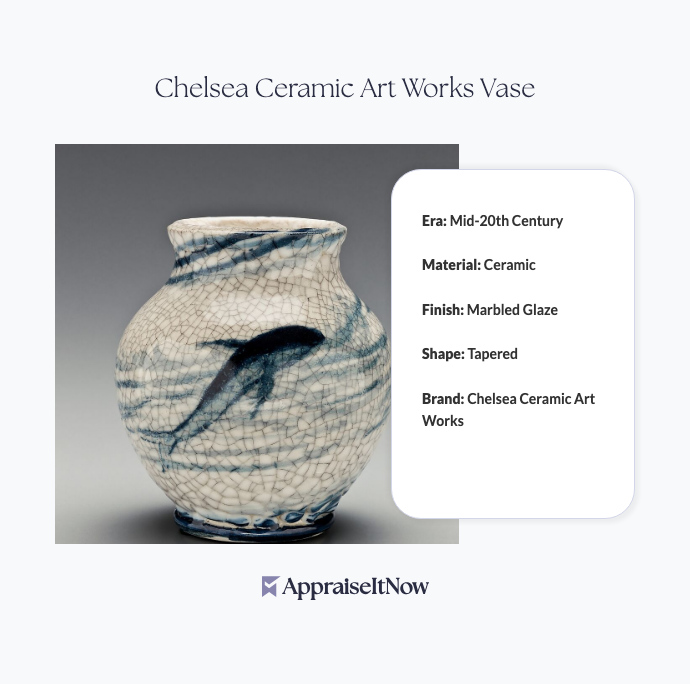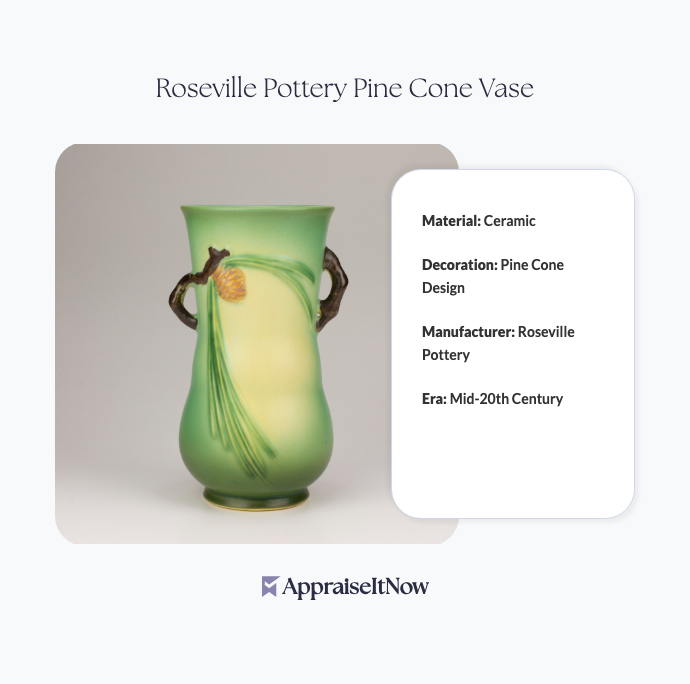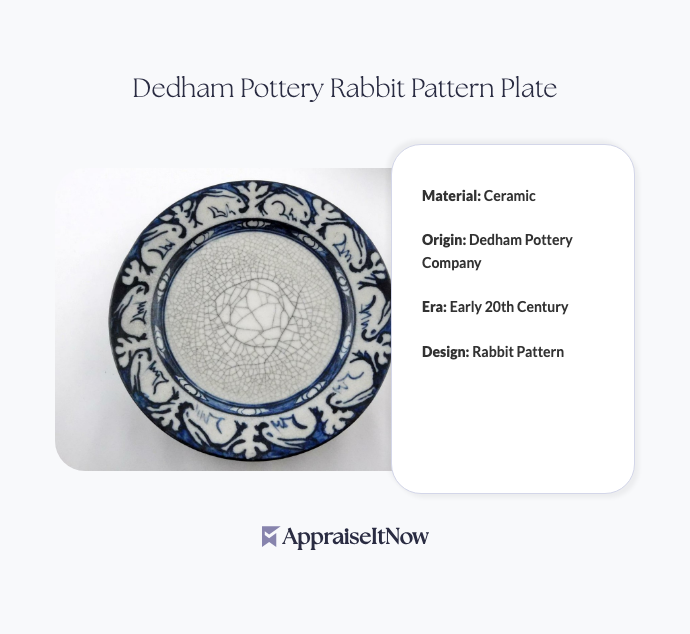<h1>How to Get Your Copeland Spode Tower Dinner Service Appraised</h1>
<p>The Copeland Spode Tower Dinner Service represents a prized possession for collectors and fine china enthusiasts alike. With estimated values ranging from <strong>$800 to $1,200</strong>, understanding how to properly appraise this iconic blue-and-white transferware ensures you receive accurate documentation for insurance, sale, or estate planning purposes. Whether you've inherited this treasured set or recently acquired it, professional appraisal protects your investment and provides clarity around its true market value.</p>
<h2>What Makes Copeland Spode Tower Valuable</h2>
<p>The Copeland Spode Tower pattern debuted in <strong>1814</strong>, establishing itself as one of the most enduring and beloved designs in fine china history. Your dinner service features the distinctive blue-and-white transfer-printed landscape depicting an English country house and manicured gardens—a romantic motif that captured Victorian sensibilities and continues captivating collectors today.</p>
<p>The value of your Copeland Spode Tower service stems from several convergent factors. First, the <strong>limited production run</strong> during the Copeland Pottery era means fewer complete sets survive today, particularly those maintaining their original pieces in excellent condition. Second, the pattern's fame within collecting communities means steady, reliable demand. Unlike trendy decorative items that fade from favor, the Tower pattern has maintained consistent collector interest for over two centuries, making it a genuinely sought-after <a href="/types/memorabilia-and-collectibles">memorabilia and collectible</a>.</p>
<p>The craftsmanship deserves mention as well. Produced using traditional techniques that prioritized durability and aesthetic refinement, each piece displays intricate detail work characteristic of Spode's exceptional standards. This commitment to quality explains why so many examples survive in relatively good condition—they were built to last, both functionally and visually.</p>
<div class="callout tip"><p><strong>Collector's Note</strong></p>
<p>Complete dinner services command significantly higher premiums than partial sets or individual pieces. A full service with serving pieces, platters, and accessories can appreciate 40-60% beyond fragmented lots.</p></div>
<h2>Understanding Pattern Rarity and Current Market Demand</h2>
<p>Before pursuing appraisal, recognizing where the Tower pattern sits within Spode's broader catalog helps contextualize its value. The question of which Spode patterns currently command the highest prices depends on pattern rarity, age, and collector sentiment. While Tower remains consistently popular, other patterns like Blue Italian and certain Christmas-themed designs have experienced valuation fluctuations based on emerging collector preferences.</p>
<p>The Tower pattern's advantage lies in its sustained demand across multiple collector demographics. Decorators appreciate it for contemporary interiors, traditionalists seek it for period authenticity, and serious china collectors recognize it as a foundational pattern representing Spode's golden era. This broad appeal supports stable pricing that rarely experiences the volatile swings affecting more specialized or newly discovered patterns.</p>
<p>Documentation of your set's rarity factors becomes crucial during appraisal. If your service includes pieces from specific production periods, rare serving implements, or variants with unusual color saturation or pattern details, an expert appraiser identifies these elements and adjusts valuation accordingly.</p>
<h2>Authenticating Your Copeland Spode Tower Service</h2>
<p>Distinguishing between genuine Copeland Spode pieces and later reproductions or competing manufacturers requires understanding the specific marks and backstamps characteristic of authentic examples. This authentication question—what are the distinguishing marks between Copeland and Spode—directly affects appraisal value, as misattributed or reproduction pieces sell for a fraction of authentic estimates.</p>
<p>Genuine Copeland Spode Tower pieces typically display <strong>maker's marks</strong> on the underside, generally including "Copeland" or variations like "Copeland & Garrett" depending on production era. The pattern name "Tower" or "Tower of London" appears on many pieces, though earlier examples sometimes lack explicit pattern identification. Color consistency matters too—authentic transfer-printed Tower patterns demonstrate uniform blue coloring without bleeding or irregularity, reflecting period printing techniques.</p>
<p>When examining your service for appraisal, look for these authentication indicators: the potters' mark clarity and ink consistency, the precise placement of backstamps relative to piece edges, crazing patterns (fine surface cracks that develop naturally over time but shouldn't appear uniformly distributed), and the weight and translucency of the porcelain itself. Professional appraisers possess reference materials and comparative expertise that distinguish authentic from counterfeit with certainty.</p>
<div class="callout note"><p><strong>Authentication Tip</strong></p>
<p>Many Copeland Spode pieces from the 1814-1850 period display intentional maker variations that modern reproductions often miss. Appraisers look for these period-appropriate inconsistencies as authenticity markers.</p></div>
<h2>Dating and Identifying Your Specific Pieces</h2>
<p>How can you reliably date Copeland Spode pieces—what marks, backstamps, or stylistic clues should you look for? Understanding production timelines helps appraisers establish your service's age with confidence, which substantially impacts valuation since earlier examples typically command premiums.</p>
<p>The <strong>1814 introduction date</strong> represents the Tower pattern's origin point. Pieces dating to this early period and the subsequent 30-40 years of production generally command the highest values due to the period's hand-finishing techniques and superior material quality. Later 19th-century production, while still valuable, typically carries slightly reduced premiums.</p>
<p>Dating involves examining several elements: the backstamp style (early marks differ markedly from later Victorian-era stamps), the pattern execution (printing techniques evolved, becoming more consistent over time), the porcelain body (formula changes affected translucency and weight), and the form of serving pieces (shapes evolved with design trends). Your appraisal documentation should specify the production period or range, establishing baseline value parameters before condition factors are evaluated.</p>
<h2>Condition Assessment and Its Impact on Valuation</h2>
<p>Your Copeland Spode Tower service's condition profoundly influences appraisal value, often determining whether your set falls toward the $800 or $1,200 estimate—or potentially beyond. Understanding condition issues and their documentation helps you prepare accurate expectations before professional evaluation.</p>
<p>Common condition considerations affecting Spode valuation include <strong>crazing</strong> (fine surface cracks that develop naturally over decades), <strong>chips</strong> particularly on rims or handles where breakage occurs during use, <strong>restoration work</strong> including professional repairs or amateur attempts at restoration, and <strong>pattern wear</strong> where the blue transfer-print fades or abrades from use or improper cleaning. Professional condition assessment distinguishes between minor cosmetic issues that collectors routinely accept and significant damage that substantially reduces desirability.</p>
<p>Here's what appraisers specifically document: the extent and location of any chips or cracks, whether damage has been professionally repaired or merely stabilized, the overall pattern clarity and coloring consistency across the service, the condition of gilding or rim decoration if present, and the completeness of the original service. This detailed documentation establishes the precise condition grade—typically ranging from Mint, Excellent, Very Good, Good, or Fair—with corresponding value adjustments.</p>
<h2>Preparing Your Service for Professional Appraisal</h2>
<p>How should you document and photograph your Copeland Spode Tower dinner service for an accurate online appraisal? Proper preparation significantly streamlines the appraisal process and ensures appraisers capture all relevant details for accurate valuation. When you're ready to submit your service through our platform at <strong>AppraiseItNow</strong>, we recommend following specific photographic and descriptive protocols.</p>
<p>Start with <strong>comprehensive photography</strong> covering multiple angles. Capture clear, well-lit images of representative dinner plates, salad plates, cups and saucers, serving platters, and any specialty pieces included in your service. Photograph the underside of pieces clearly showing maker's marks and backstamps. Include detail shots of pattern clarity, any damage or repairs, and gilding or decoration elements. Provide scale reference (place a coin or ruler in one image) so appraisers understand piece dimensions.</p>
<p>Describe the <strong>complete service inventory</strong> with specific counts—for example, "12 dinner plates, 12 salad plates, 12 cups and saucers, serving platter, vegetable dish, gravy boat, and sugar bowl." Note any missing pieces from the original set, as incomplete services carry reduced values. Document all known condition issues, including previous repairs or restorations. If your service has provenance—family history, previous owner information, or documentation—include this context as it may influence valuation.</p>
<div class="callout tip"><p><strong>Documentation Best Practice</strong></p>
<p>Create a written inventory before photographing, then cross-reference images to ensure complete documentation. This organized approach helps appraisers evaluate every component systematically.</p></div>
<h2>Understanding Appraisal Types for Your Needs</h2>
<p>What types of valuation reports do appraisers provide—market value, replacement value, insured value, probate/executor valuations—and which do you need? Understanding these distinctions helps you request the appropriate appraisal type matching your specific purpose.</p>
<p><strong>Fair market value</strong> appraisals estimate what your Copeland Spode Tower service would sell for in the current collector market, assuming a willing buyer and seller with no pressure either direction. This serves insurance purposes and general asset documentation. <strong>Replacement value</strong> appraisals estimate what you'd pay to replace your specific service with an equivalent example in the current market—typically slightly higher than fair market value since sourcing identical pieces requires premium payment. <strong>Insurance coverage</strong> appraisals specifically document values for insurance policy underwriting, ensuring adequate coverage protecting your investment. <strong>Estate and probate valuations</strong> establish documentation for tax purposes, estate distribution, or legal proceedings, requiring USPAP-compliant reporting formats.</p>
<p>When pursuing appraisal through our platform at <strong>AppraiseItNow</strong>, appraisers can provide any of these valuations, with USPAP compliance ensuring documentation acceptable to insurance companies, courts, and financial institutions. Specify your intended use—whether insurance protection, sale documentation, estate planning, or legal matters—and our credentialed experts deliver appropriately formatted reports.</p>
<h2>Where to Sell After Professional Appraisal</h2>
<p>Once you've obtained professional valuation documentation, understanding your sales options helps maximize return on your Copeland Spode Tower investment. The question of where are the best places to sell vintage Copeland Spode—auction houses, online marketplaces, antiques dealers, or consignment—carries important implications for price realized and seller convenience.</p>
<p><strong>Specialized auction houses</strong> handling decorative arts and <a href="/types/antique-furniture">antique furniture</a> attract serious collectors willing to pay premium prices for documented, quality pieces. However, auction fees typically run 20-30% of the hammer price, reducing net proceeds. <strong>Online marketplaces</strong> like eBay or specialized china sites offer broader exposure and potentially faster sales, though buyer sophistication varies and shipping fragile items carries risk. <strong>Antique dealers</strong> and consignment shops provide convenience with potential net returns around 50-60% of selling price after commission. Each approach carries distinct advantages depending on your priorities regarding price realization, convenience, and timeline.</p>
<p>Professional appraisal documentation becomes invaluable in any sales scenario, as credible valuation from certified experts significantly enhances buyer confidence and justifies premium pricing. Buyers recognize that USPAP-compliant appraisals represent independent, expert assessment rather than seller-generated estimates.</p>
<h2>The Role of Provenance in Your Valuation</h2>
<p>Exploring the role of <a href="/blog/exploring-the-role-of-provenance-in-art-appraisals-assessing-historical-significance">provenance in art appraisals</a> extends directly to fine china valuation. Your Copeland Spode Tower service's ownership history, if documented, influences collector appeal and ultimate valuation. Services with notable previous owners, museum display history, or published references in scholarly works carry substantial premiums over undocumented examples.</p>
<p>Consider your acquisition circumstances. Did you inherit the service from a respected collector? Does family documentation provide ownership timeline? Are there publication references or exhibition catalogs mentioning your specific pieces? While many Spode services lack extensive provenance documentation, the information you possess should be compiled and provided to your appraiser, as it contextualizes value and potentially supports higher estimates.</p>
<div class="callout note"><p><strong>Provenance Impact</strong></p>
<p>Well-documented Copeland Spode services from established collections or with family history premiums can appreciate 15-25% above comparable undocumented examples.</p></div>
<h2>Getting Your Appraisal Through AppraiseItNow</h2>
<p>Our process for appraising fine porcelain and ceramics parallels professional standards across the antique and collectibles market. Through <strong>AppraiseItNow</strong>, you submit photographs, descriptions, and documentation of your Copeland Spode Tower service securely online. Our credentialed appraisers—many holding credentials like <strong>AAA</strong> (American Society of Appraisers), <strong>ISA</strong> (International Society of Appraisers), <strong>ASA</strong> (American Society of Appraisers), or <strong>CAGA</strong> (Certified Antique Glassware Appraisers)—evaluate your images and materials, conduct comparative market analysis, and deliver certified valuations.</p>
<p>The process delivers several advantages. You avoid the expense and inconvenience of traveling with fragile pieces to in-person appraisers. Professional photography guidance ensures quality documentation. Appraisers access comprehensive market data and comparable sales information to support accurate valuations. Reports arrive in USPAP-compliant formats suitable for insurance, legal, or sale purposes. Our tech-enabled platform streamlines everything from submission through report delivery.</p>
<p>For comprehensive insights into valuing fine china more broadly, our guide on <a href="/blog/appraisals-for-fine-porcelain-and-ceramics-valuing-delicate-artistry">appraising fine porcelain and ceramics</a> explores the broader context of china appraisals, helping you understand the factors distinguishing premium pieces from standard examples.</p>
<h2>Understanding Replacement Costs vs. Market Value</h2>
<p>Many service owners wonder whether their estimated <strong>$800-$1,200</strong> valuation represents what they'd receive selling the service or what replacement would cost. This distinction matters significantly for insurance and planning purposes.</p>
<p>If your home experienced fire or theft and you needed to replace your specific Copeland Spode Tower service, replacement cost might exceed fair market value due to the challenge of sourcing identical pieces with matching production dates and condition. Collectors often pay premiums when completing services or matching existing collections. Conversely, if you're selling a complete service on the open market, fair market value likely represents actual proceeds after market forces establish equilibrium.</p>
<p>Professional appraisers clarify this distinction in their reports, specifying whether the valuation represents fair market value, replacement cost, or another standard. For insurance purposes, replacement cost valuations typically provide better protection, ensuring adequate coverage if loss occurs.</p>
<h2>Ongoing Value Assessment and Re-appraisal</h2>
<p>Your Copeland Spode Tower service's valuation doesn't remain static indefinitely. Market conditions, comparable sales trends, and collector interest fluctuations affect value over time. Professional appraisers recommend obtaining updated valuations every 3-5 years if your service serves insurance purposes or if you anticipate eventual sale. This periodic re-assessment captures market shifts and ensures your documentation remains current.</p>
<p>Fine china markets have historically demonstrated stability with modest appreciation, particularly for complete services in good condition. However, collecting trends occasionally shift—certain patterns experience renewed interest while others face reduced demand. Regular professional assessment positions you accurately within the market, whether for insurance sufficiency or sale timing optimization.</p>
<hr />
<div class="callout note"><p><strong>Key Takeaway</strong></p>
<p>A certified appraisal of your Copeland Spode Tower Dinner Service provides authoritative documentation establishing its true market value, protecting your investment through accurate insurance coverage, supporting sale efforts with credible valuation, and offering confidence that you understand both the historical significance and monetary worth of this cherished fine china collection.</p></div>







.avif)







